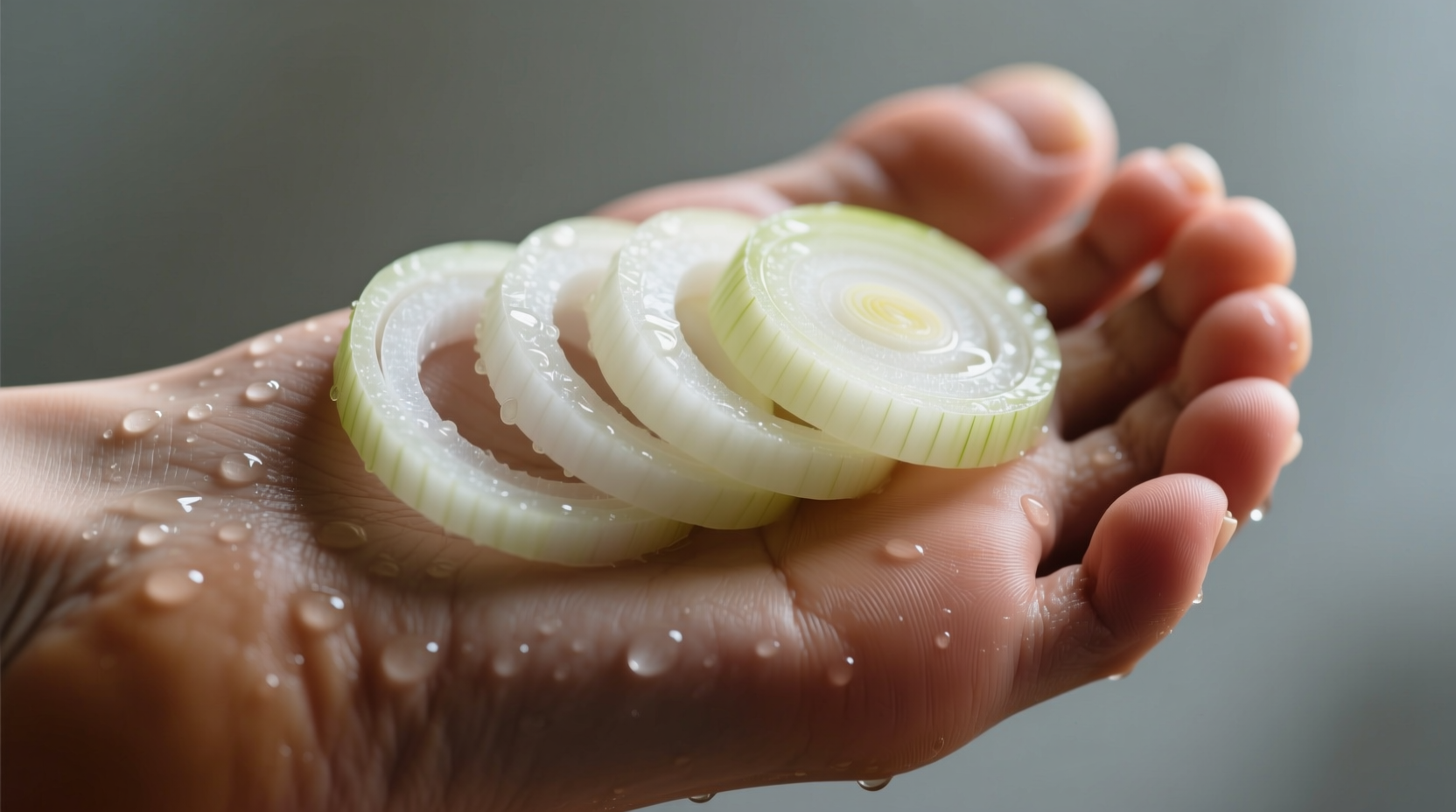Placing onions on the bottom of feet is a traditional folk remedy with no scientific evidence supporting its claimed health benefits. While onions contain beneficial compounds when consumed, research shows these properties don't transfer through foot application due to the skin's barrier function on soles. This practice originates from cultural traditions but lacks medical validation according to current scientific understanding.
Understanding the Onion-on-Feet Practice: Separating Tradition from Science
Have you ever wondered why some people place raw onions on the soles of their feet? This unusual practice has circulated through generations as a purported health remedy, but what does science actually say? Let's explore this traditional method with clear facts and practical guidance.
The Cultural Origins of This Foot Remedy
This folk practice appears in various traditional medicine systems worldwide, particularly in Asian and Eastern European cultures. Historical records show similar applications dating back centuries, where practitioners believed certain foods could draw out "toxins" or balance bodily energies through strategic placement on the skin.
| Region | Historical Documentation | Reported Purpose |
|---|---|---|
| Eastern Europe | 19th century home remedy texts | Treating respiratory infections |
| East Asia | Traditional medicine manuscripts | "Energy" balancing practices |
| Middle East | Folk medicine oral traditions | Reducing fever symptoms |
What Science Says About Onion Compounds and Skin Absorption
Onions contain beneficial compounds like quercetin and allicin, which have documented antioxidant and anti-inflammatory properties when consumed. However, the skin on the soles of feet presents a significant barrier to absorption:
- The stratum corneum (outer skin layer) on feet is 4-5 times thicker than on other body parts
- Research from the National Institutes of Health shows minimal transdermal absorption of onion compounds
- A 2020 Journal of Dermatological Science review found no evidence supporting therapeutic effects from topical onion application for systemic health

Common Claims vs. Scientific Reality
Let's examine the most frequently cited benefits of this practice against current scientific understanding:
| Claimed Benefit | Scientific Evidence | Expert Assessment |
|---|---|---|
| "Detoxifies" the body | No evidence of toxin removal through feet | Myth - kidneys and liver handle detoxification |
| Reduces cold/flu symptoms | No clinical studies support this effect | Placebo effect possible, but no physiological mechanism |
| Improves sleep quality | One small 2018 study showed no significant difference | Likely psychological comfort rather than physiological effect |
When This Practice Might Be Harmless (and When to Avoid It)
While generally safe for most people as a short-term experiment, certain situations require caution:
- Safe for: Healthy adults wanting to try traditional remedies without replacing medical treatment
- Avoid if: You have diabetes, poor circulation, or compromised skin integrity
- Stop immediately if: You experience skin irritation, redness, or burning sensations
The American Academy of Dermatology notes that raw onions contain compounds that can cause contact dermatitis in sensitive individuals, particularly when left on skin for extended periods.
More Effective Alternatives Backed by Research
If you're seeking natural approaches to support your health, consider these evidence-based alternatives:
- For immune support: Consuming onions in your diet provides measurable health benefits through their antioxidant compounds
- For better sleep: Establishing consistent sleep routines shows stronger evidence than topical applications
- For respiratory health: Steam inhalation with saline solution has documented benefits for congestion relief
When exploring traditional remedies, always consult with healthcare professionals about integrating them safely with evidence-based treatments.
Respecting Cultural Traditions While Prioritizing Health
Many traditional practices contain valuable wisdom, even when specific applications lack scientific validation. The onion-on-feet remedy reflects our ancestors' attempts to understand health through available resources. Modern science helps us distinguish which elements might have merit while protecting us from potentially harmful practices.
As you explore natural health approaches, maintain a balanced perspective that honors cultural heritage while prioritizing safety and evidence-based practices. Remember that the most effective health strategies typically combine the best of traditional wisdom with current scientific understanding.











 浙公网安备
33010002000092号
浙公网安备
33010002000092号 浙B2-20120091-4
浙B2-20120091-4